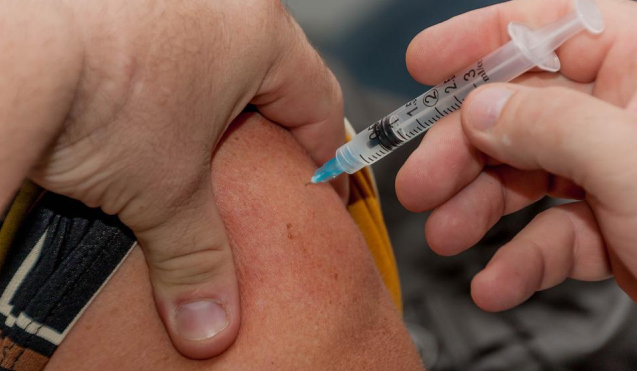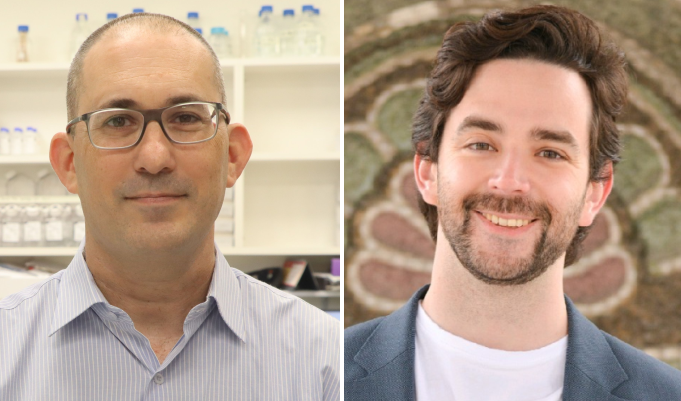A recent study from Tel Aviv University proposes a novel therapy for AIDS that might be evolved into a vaccine or a one-time treatment for HIV patients.
The research investigated the modification of type B white blood cells in a patient’s body to produce anti-HIV antibodies in response to the virus. B cells are a kind of white blood cell that produces antibodies against viruses, bacteria, and other pathogens. The formation of B lymphocytes occurs in the bone marrow. B cells migrate into the blood and lymphatic system during maturation, and then to the various bodily sections.
The study was led by Dr. Adi Barzel and the Ph.D. student Alessio Nehmad, both from the school of neurobiology, biochemistry, and biophysics at the George S. Wise Faculty of life sciences and the Dotan Center for Advanced Therapies in the collaboration with the Sourasky Medical Center (Ichilov). The study was conducted in collaboration with additional researchers from Israel and the US. The study was published in the prestigious journal Nature.
Please help us out :
Will you offer us a hand? Every gift, regardless of size, fuels our future.
Your critical contribution enables us to maintain our independence from shareholders or wealthy owners, allowing us to keep up reporting without bias. It means we can continue to make Jewish Business News available to everyone.
You can support us for as little as $1 via PayPal at [email protected].
Thank you.
HIV VS. AIDS
HIV is a virus that destroys cells in the immune system and makes it harder for the body to fight off common infections and diseases.
AIDS, or acquired immune deficiency syndrome, is a group of diseases and disorders that can be fatal and are caused by the HIV virus’s damage to the immune system.
HIV may be spread from person to person, but AIDS cannot be.
HIV is a virus that destroys cells in the immune system and makes it harder for the body to fight off common infections and diseases.
AIDS, or acquired immune deficiency syndrome, is a group of diseases and disorders that can be fatal and are caused by the HIV virus’s damage to the immune system.
HIV may be spread from person to person, but AIDS cannot be.
Dr. Adi Barzel explains: “until now, only a few scientists, and we among them, had been able to engineer B cells outside of the body, and in this study, we were the first to do this in the body and to make these cells generate desired antibodies.
“Genetic engineering is done with viral carriers derived from viruses that were engineered so as not to cause damage but only to bring the gene coded for the antibody into the B cells in the body.
“Additionally, in this case, we have been able to accurately introduce the antibodies into a desired site in the B cell genome. All model animals who had been administered the treatment responded and had high quantities of the desired antibody in their blood. We produced the antibody from the blood and made sure it was actually effective in neutralizing the HIV virus in the lab dish.”
CRISPR was used for genetic modification. This is a technology-based on a bacterial immune system against viruses. The CRISPR systems are utilized by bacteria as a type of molecular “search engine” to discover and deactivate viral sequences.
Two biochemists who had figured out the sophisticated defense mechanism, Emmanuelle Charpentier and Jennifer Doudna, were able to reroute for the cleavage of any DNA of choice. The technology has since been used to either disable unwanted genes or repair and insert desired genes. Doudna and Charpentier earned international recognition when they became chemistry Nobel Prize winners in 2020.
The Ph.D. student Alessio Nehmad elaborates on the use of CRISPR: “we incorporate the capability of a CRISPR to direct the introduction of genes into desired sites along with the capabilities of viral carriers to bring desired genes to desired cells. Thus, we are able to engineer the B cells inside the patient’s body.
“We use two viral carriers of the AAV family, one carrier codes for the desired antibody, and the second carrier codes the CRISPR system. When the CRISPR cuts in the desired site in the genome of the B cells it directs the introduction of the desired gene: the gene coding for the antibody against the HIV virus, which causes AIDS.”
The researchers note that there is currently no genetic cure for AIDS, so there are numerous chances for study. Dr. Barzel concludes: “We have created a novel therapy that may destroy the virus with a single injection and has the potential to bring about a significant improvement in the patients’ condition. When modified B cells come into contact with the virus, the virus stimulates and urges them to divide; hence, we are employing the disease’s fundamental cause to attack it. In addition, if the virus evolves, so will the B cells in order to resist it. We have therefore developed the first drug that can evolve in the body, and defeat viruses in the ‘arms race’.”
The researchers believe that in the next few years they will be able to manufacture medications for AIDS, other infectious disorders, and some cancers caused by viruses, such as cervical cancer, head and neck cancer, and others.






